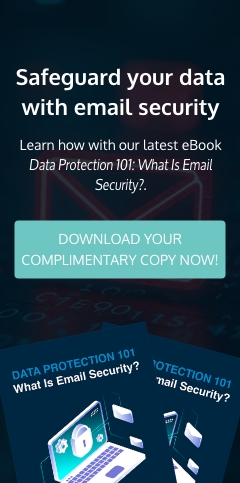There tends to be a lot of conflicting information when it comes to passwords, from debates on the necessity of complex passwords to defining what makes a password truly intricate. Another pressing issue is the question of whether passwords are still relevant in an era dominated by biometric verification. Complicating matters further, numerous organizations grapple with instilling proper password habits, incorporating password managers effectively, and understanding the broader role passwords play in fortifying their cybersecurity measures.
This brings us to the question: With all the intricacies and shortcomings of passwords, should your business bid farewell to them in the new year? This article aims to provide clarity on this matter.
The case for ditching passwords
For years, passwords have served as our digital gatekeepers, guarding our accounts and data. But passwords are crumbling under the weight of cyberthreats and human error, forcing many businesses to rethink their security model and consider going passwordless.
While passwords remain a necessity for many organizations, their effectiveness as a secure form of verification is compromised by several inherent flaws. Firstly, passwords are susceptible to being cracked through brute force attacks or sophisticated phishing scams. Additionally, the prevalence of data leaks exposes countless passwords, significantly heightening the vulnerability of user accounts.
Human vulnerabilities are another factor. We choose predictable passwords, reuse them, and fall prey to social engineering — lapses in judgment that create backdoors for attackers. We also struggle to remember and manage countless passwords, leading to constant resets that drain productivity.
Due to these and other flaws, passwordless authentication has become more widely adopted. If you need further proof that it’s possible to go passwordless, consider Google, Microsoft, and PayPal. These companies have already embraced passwordless approaches and managed to reap the rewards of increased security and improved user satisfaction.
Potential obstacles to passwordless adoption
Implementing passwordless authentication is quite a feat and may not work for every organization. As businesses contemplate the shift toward passwordless authentication, several challenges may impede a smooth transition, including.
- Legacy systems compatibility: Businesses still depend on outdated systems that may not readily support newer authentication methods. Integrating passwordless solutions can be complex and may necessitate system upgrades.
- User resistance and training: Employees accustomed to traditional passwords might resist the change, viewing it as disruptive or unfamiliar. Adequate training programs are crucial to ensure a seamless adaptation of passwordless practices.
- Interoperability issues: Ensuring interoperability across various platforms and devices can be a challenge. Passwordless authentication must seamlessly function on desktops, laptops, and mobile devices, and so require meticulous planning.
Addressing security and privacy concerns
In any case, passwordless authentication presents a promising alternative. If you think going passwordless is right for your business, you must first address the following security and privacy concerns.
- Biometric data protection: Biometric authentication, a common passwordless approach, introduces concerns about the storage and protection of sensitive biometric data. Employing robust encryption and adhering to stringent privacy standards are crucial.
- Single-point-of-failure risks: Relying solely on one authentication factor, such as a fingerprint or face scan, creates a single point of failure. Implementing multifactor authentication alongside passwordless methods helps mitigate this risk by adding layers of security.
- Authentication spoofing: The risk of impersonation or spoofing remains a challenge with passwordless systems. Staying abreast of advancements in biometric technology and regular updates to authentication algorithms are essential to stay ahead of potential exploits.
- Regulatory compliance: Businesses must navigate regulatory frameworks such as GDPR, HIPAA, or others applicable to their industry. Ensuring that passwordless solutions comply with data protection laws is critical to avoid legal ramifications.
- User privacy concerns: Users may worry about the extent of data collection during the authentication process. Transparent communication about the minimal data stored and stringent privacy measures can assuage these concerns.
The way forward for password usage
Ditching passwords entirely might not be the right fit for everyone. Every business has unique needs, security risks, and budget considerations, making the decision to abandon passwords a nuanced one. As you decide on a path forward regarding the usage of passwords in your business, it’s vital to take a few things into consideration.
Begin by conducting a thorough evaluation of your risks. Identify the most critical data within your organization and weigh the potential consequences of a security breach. This introspection will guide you in determining the level of security truly necessary for your specific circumstances.
Then, take stock of your resources. Consider both the financial and operational implications of introducing new authentication methods and assess whether your organization can afford the necessary infrastructure upgrades and the associated user training.
Additionally, gauge the tech-savviness of your users. Recognize the potential for resistance to adopting novel authentication methods and tailor your approach accordingly.
By understanding your organization's unique landscape and adopting a thoughtful, phased approach to authentication, you can navigate the complexities of transitioning away from passwords and enhance security measures without compromising operational efficiency. NetQuest’s team can help — leave us a message today.


